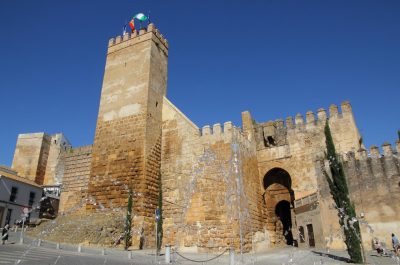The Puerta de Sevilla is one of the most significant elements among Carmona’s rich architectural ensemble. Although archaeological remains have been found dating back to the 14th and 12th centuries BC, it originated in the 9th century BC. Therefore, this monument, which was granted artistic and historic heritage before even Seville’s Giralda, reflects western history’s milestones and events of which the town has been both a witness and participant.
Effectively, the culture of those that have settled in Spain’s tableland has been imprinted on the Puerta de Sevilla’s ashlar stones: including Eastern Mediterraneans, Phoenicians, Carthaginians, Romans, Arabs and lastly, Christians. The Carthaginians built a bastion over the original 13th century BC tower, giving way to the first traces of its quadrangular appearance; heavy and strong to defend the city from the Roman army. The Romans strengthened and renovated the structure erected by the Carthaginians with a group of doors that still exist. A podium and church were constructed over the bastion. These and other interventions carried out by the Romans, especially during the 1st century of our era, made Carmona, “the strongest city of the Hispania Betica of all time” as Caesar proclaimed when he conquered the city.
Several interventions were completed after the 12th century. The horseshoe arch on the west side is from the Almohad era. In 1885, the arch named after Felipe II, located further west than the Almohad arch, was destroyed. The ensemble was stripped of the adjoining houses in the 1970s. In 1973, the last restorations were carried out, which allowed rehabilitation of the lower and upper prison halls, the Patio de los Aljibes and the Torre de Oro, where we can observe wonderful images of Carmona’s countryside.
Address
Address:
C/ Puerta de Sevilla s/n,Carmona
GPS:
37.471388029437, -5.6418502195343
Telephone:
Email:
-







